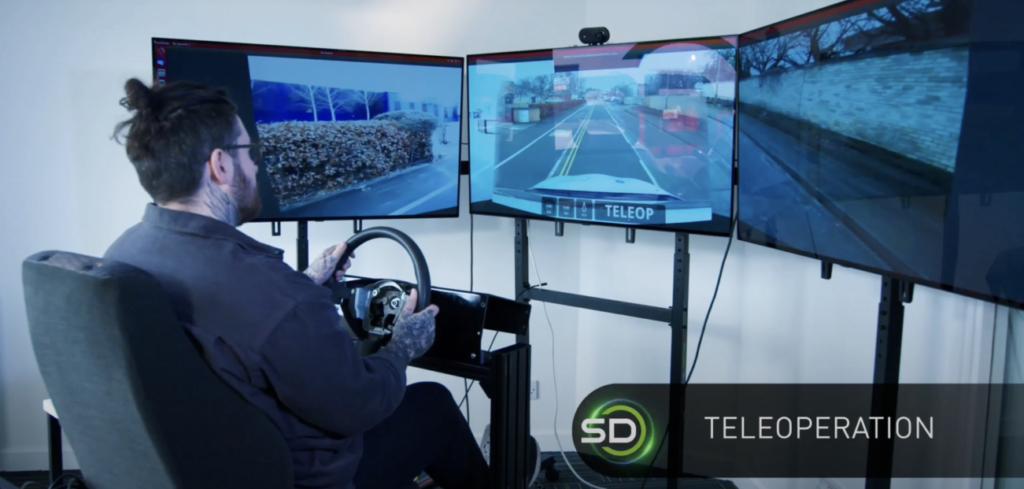A technology demonstration on public roads involving control of an autonomous vehicle being switched through three states – manual, autonomous and teleoperated operation – has been carried out in the UK cities of Oxford and London.
The trial set out to prove that control transfer could be achieved in a cyber-secure fashion and was undertaken as part of the UK government-backed Encode project. Leading the project was StreetDrone, which specializes in the implementation of teleoperation technologies to increase efficiency in supply chain logistics.
Addressing some specifics of the trial, StreeDrone project manager Fania Tsipa said of the process by which control is switched between manual and teleoperation, “The safety driver arms the vehicle, this reports ‘armed’ to the remote driver. The remote driver has a seven second window to request control to enter teleoperated mode. If after seven seconds no request for control has been made, the car will enter autonomous mode. There is no transition from autonomous to teleoperation, as all non-manual modes must be entered using the vehicle arming key by the safety driver.”
As to why it might be necessary to switch between autonomous and teleoperation, Tsipa highlighted that situations such as complex junctions, beyond the capabilities of current autonomous driving systems, would be an ideal application. Furthermore, the option for teleoperation would be particularly beneficial if the autonomous technology suffered a failure and a vehicle needed recovery.
A key element of the project was ensuring security of the vehicle and remote operating systems, to facilitate the safe transfer of vehicle control and remove the potential for external tampering. This area was managed by Angoka, an IoT security company focused on protecting machine-to-machine connectivity for transportation and smart city applications.
Hardware from Angoka was used to secure control messages between autonomous compute and drive-by-wire systems in autonomous mode, as well as the teleoperated compute and drive-by-wire in teleoperated mode. Various measures were also taken to ensure both signal security and consistency. For example, a dedicated signal was used between the vehicle and control workstation to check latency and network issues. This signal was secured by Angoka’s hardware with failsafes such as automatic cancellation of teleoperation if the network latency exceeded 200ms.
In addition to StreetDrone and Angoka, Coventry University’s Systems Security Group, part of the UK’s Centre for Future Transport and Cities (CFTC), conducted threat and risk assessment for the underpinning technology. The live trials on public roads were enabled by Oxfordshire county council and the Transport Research Lab (TRL)/Smart Mobility Living Lab.
Mike Potts, StreetDrone’s CEO, said, “The success of this trial conducted not in a controlled environment but out on the public highway, is blending autonomous technologies with teleoperation to prove an advanced level of technology readiness that can now deliver much-needed efficiencies into the supply chain. Where tasks are too complex for autonomous technologies, teleoperations steps in. This integration provides a ‘ready-now’ solution and it has been a sight to behold to see it in operation.”


